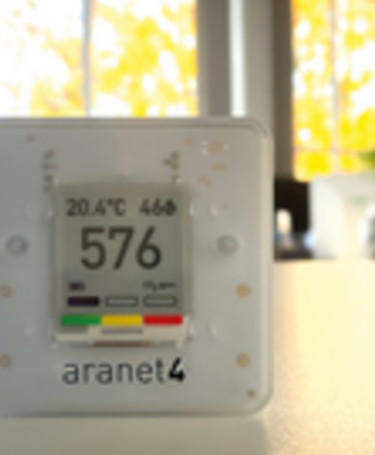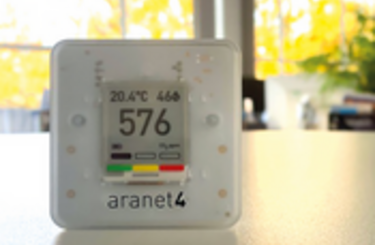
Air quality guidance aims to improve breathing space

Guidance designed to assess and improve indoor air quality has been published in the UK. Here, we find out more from two of the authors.
In the UK, there is little legislation to protect the public from indoor exposure to air pollution, despite the existence of legal limits relating to outdoor exposure to air pollution and occupational exposure.
The Institute of Air Quality Management (IAQM) has published new guidance on indoor air quality (IAQ) to fill some of these gaps in legislation and guidance. With the current major focus on the importance of ventilation in mitigating the risk of transmitting Covid-19, the guidance is particularly timely.
The document provides guidance on assessment, monitoring, modelling and mitigation of IAQ, and is set out in sections relating to typical project stages.
Four-stage assessment
The assessment criteria are based on a review of existing air quality standards legislation and guidance. This includes guidance from the IAQM itself and from the Chartered Institution of Building Services Engineers, which has published a range of information on the topic. The assessment requires input from all those involved in the design, construction or operation of a building – including quality professionals – and it can be applied to proposed, new or existing buildings. The four stages of assessment are:
- Scoping study. To review all available information, identify pollutants of concern and possible receptors, and determine whether a more detailed assessment is required.
- Assessment. This stage can be a simpler approach, by which the likely risk of exposure and potential magnitude of harm is identified, or a more detailed approach, which may involve monitoring and/or modelling.
- Consideration of mitigation and improvement opportunities.
- Reporting.
Chris Rush, who contributed to the guidance, is Air Quality Group Lead at consultants Hoare Lea. He says: “IAQ assessments are needed for any building where there are internal sources of pollution, or where there is ingress of ambient [outdoor] pollutants, and where there are people in the building who could be exposed to those air pollutants.”
Elements to consider during an assessment include pollutant sources, building activities (such as equipment and cleaning), and the building design.
Factors affecting indoor air quality
Aspects of the building design that can have an effect on IAQ include: the materials used; room volume; the ventilation strategy (including, for mechanical ventilation, the hours of operation, recirculation, and air-change rate); effectiveness of air distribution and airflow; the capacity of a room; and the heating/cooling strategy of the building.
The new guide has detailed chapters on monitoring, modelling and mitigation/improvement opportunities, and a number of case studies that offer examples and add context (see case study below).
Greater understanding and early collaboration will be key to improving indoor air quality in the future.
Emma Gibbons, a PhD student at University College London and another contributor to the guidance, says it can help to inform professionals in all areas of the construction industry, including quality management. “We are keen to open the dialogue on the topic of IAQ,” she says. “Greater understanding and early collaboration will be key to improving IAQ in the future.”
Case study: Testing air quality in a London office
The environmental quality of a second-floor office in central London was assessed after complaints of stuffiness in both summer and winter. The office had been occupied for several years, and it was found that the environmental conditions were having a perceived negative impact on productivity, as well as reported negative health effects. There was also a sense that the design of the workplace did not make employees feel valued.
Quantitative environmental monitoring of representative office areas was conducted over a one-month period, using space utilisation and indoor environmental quality (IEQ) sensors. These measured total volatile organic compounds, CO2, temperature, humidity and particulate matter, where particles are less than 2.5 micrometres in diameter (PM2.5). The data was used in conjunction with qualitative data from building user surveys to understand how the space performed.
Following the IEQ monitoring, an initial desktop study of the existing ventilation systems indicated that there was insufficient ventilation to meet recommended levels. The clearest indication was from the recorded concentrations of CO2, which significantly exceeded the good-practice threshold of 1,000 parts per million (ppm), peaking at more than 1,600ppm.
Increasing virus transmission rate
Another reason for the reported ‘stuffiness’ of the office areas was low relative humidity (RH). Good-practice RH is between 40% and 60%, whereas the IEQ sensors measured RH below this range for 85% of the time. These low RHs were unusual for the time of the year and warranted further investigation. Low humidity increases the rate of transmission of viruses and may have a direct impact on absenteeism. Studies have shown that low RHs can also affect occupant wellbeing and productivity.
At the end of the investigation, it was recommended that a detailed review of the ventilation system be commissioned. This would assess whether more ventilation could be supplied to the floor via the existing air handling units, or how additional local ventilation units could be incorporated to supplement the existing supplies. It was also recommended to increase humidity by introducing humidification to the mechanical plant and/or introducing a significant number of plants (greenery) into the office spaces.
Read the full guidance and case studies from the Institute of Air Quality Management.